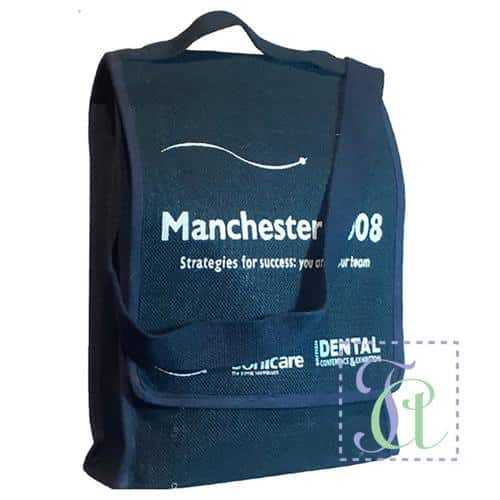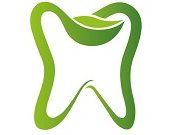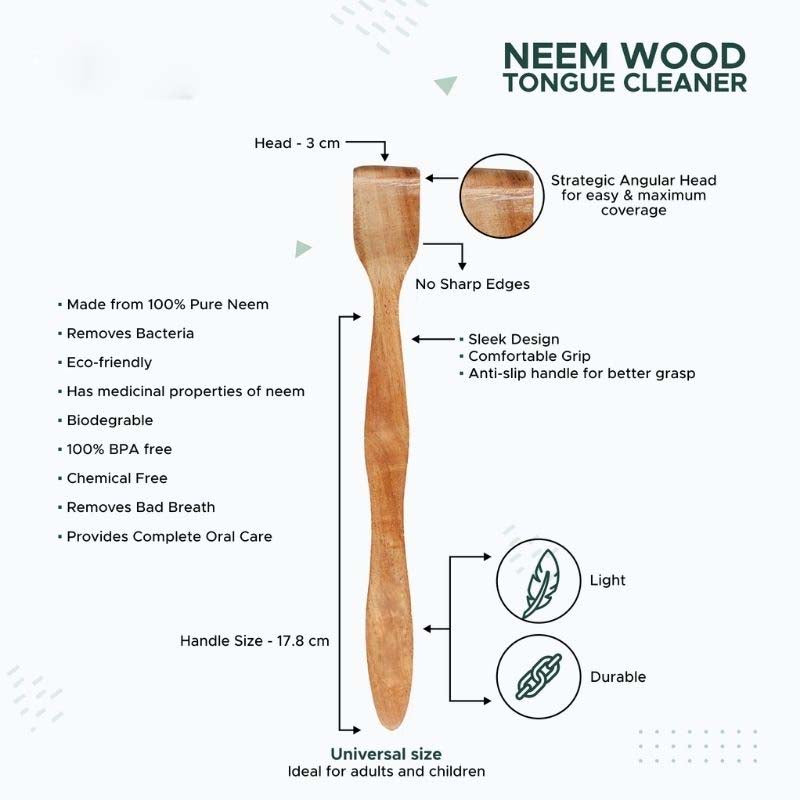Planet-Friendly Dental Care: Tips For Practitioners
Are you a dental practitioner looking to make your practice more environmentally friendly? In today’s world, it’s essential to prioritize sustainable practices in every aspect of our lives, including dentistry.
By adopting planet-friendly dental care, you not only contribute to the well-being of the environment but also enhance the overall health and well-being of your patients.
This article will provide you with a comprehensive guide on how to implement eco-friendly measures in your dental practice, ensuring a more sustainable future for both your patients and the planet.
In the following paragraphs, you will discover practical tips and strategies to reduce waste, incorporate eco-friendly materials and equipment, promote water conservation, embrace energy efficiency, implement green cleaning practices, and educate your patients on the importance of oral health and sustainability.
By implementing these strategies, you can significantly reduce your carbon footprint and create a greener, more sustainable dental practice.
So let’s dive in and explore the world of planet-friendly dental care together!
Reduce Waste in Your Practice
You can significantly reduce waste in your practice by implementing simple yet effective strategies. One of the first steps you can take is to use digital records instead of paper files. By transitioning to a paperless system, you not only save trees but also reduce the amount of waste generated from printing and disposing of paper documents.
Additionally, you can encourage your patients to fill out forms online or via email, further reducing the need for paper in your practice.
Another way to minimize waste in your dental practice is by implementing a recycling program. Set up designated recycling bins throughout your office for items such as paper, plastic, and glass. Educate your staff on what can be recycled and make it easy for them to participate. By recycling materials instead of throwing them in the trash, you can reduce the amount of waste that ends up in landfills and contribute to a more sustainable environment.
Furthermore, consider using eco-friendly dental products and supplies. Look for toothbrushes made from biodegradable materials or ones with replaceable heads to reduce plastic waste. Choose dental floss that is made from natural fibers or compostable materials. Additionally, opt for eco-friendly packaging when purchasing dental supplies.
By making these small but impactful changes, you can make your dental practice more planet-friendly and contribute to a healthier environment.
Consider Eco-Friendly Materials and Equipment
When it comes to being environmentally conscious in your dental practice, there are several key points to consider.
First, make sure you’re using biodegradable dental floss, which is a great alternative to traditional floss that can take years to break down.
Additionally, explore digital radiography systems that can significantly reduce waste and eliminate the need for chemical processing.
Lastly, be on the lookout for sustainable alternatives for dental materials, such as toothbrushes and filling materials, that are made from recycled or renewable resources.
Use biodegradable dental floss
Switching to biodegradable dental floss is a simple and eco-friendly way to take care of your teeth. Traditional dental floss is usually made of nylon or other synthetic materials that can take hundreds of years to decompose.
When you use biodegradable floss, you’re choosing a more sustainable option that breaks down naturally over time, reducing the amount of waste in our landfills and oceans.
By making this small change in your dental care routine, you can make a big impact on the environment.
Not only is biodegradable dental floss better for the planet, but it’s also safe for you and your oral health.
Many traditional dental flosses contain harmful chemicals and coatings that can be absorbed by your body or accumulate in the environment. Biodegradable floss, on the other hand, is typically made from natural materials like silk or plant-based fibers, without any added chemicals.
This means that not only are you reducing your carbon footprint, but you’re also protecting your overall health.
So, next time you go to floss your teeth, consider making the switch to biodegradable floss and contribute to a healthier planet.
Explore digital radiography systems
Explore digital radiography systems, which offer a modern and efficient way to capture high-quality dental images. These systems use electronic sensors instead of traditional film, allowing for instant image capture and easy storage.
Here are three reasons why you should consider incorporating digital radiography into your dental practice:
1. Improved diagnostic capabilities: Digital radiography systems provide highly detailed images that can be enhanced and manipulated for better diagnostic accuracy. This allows you to identify dental issues, such as cavities or bone loss, with greater precision. The ability to zoom in and adjust the contrast also enables you to spot subtle abnormalities that may have been missed with traditional X-rays.
2. Reduced radiation exposure: Digital radiography systems require significantly less radiation compared to conventional X-ray film. This is beneficial for both patients and dental professionals, as it helps minimize the potential risks associated with radiation exposure. Additionally, digital images can be easily shared with other healthcare providers, reducing the need for duplicate X-rays and further reducing radiation exposure for patients.
3. Streamlined workflow and increased efficiency: With digital radiography, there is no need for film processing or darkroom facilities. Images can be instantly viewed on a computer screen, saving time and eliminating the need for physical storage space. Furthermore, digital images can be easily stored and accessed electronically, reducing the risk of image loss or damage. This streamlines the workflow in your dental practice, allowing you to see more patients and provide a higher level of care.
Incorporating digital radiography systems into your dental practice can revolutionize the way you capture and analyze dental images. With improved diagnostic capabilities, reduced radiation exposure, and increased efficiency, these systems offer numerous benefits for both you and your patients.
Look for sustainable alternatives for dental materials
Consider seeking out eco-friendly options for dental materials to promote sustainability and reduce the environmental impact of your practice. Traditional dental materials often contain harmful chemicals and contribute to pollution when disposed of. By choosing sustainable alternatives, you can help protect the planet while still providing quality care to your patients.
One option to consider is using biodegradable or compostable dental materials. These materials are designed to break down naturally over time, reducing the amount of waste that ends up in landfills. For example, you can use biodegradable toothbrushes made from bamboo or other sustainable materials. Additionally, there are compostable dental floss options available that are made from natural fibers and come in eco-friendly packaging. By incorporating these materials into your practice, you can reduce your ecological footprint and contribute to a healthier environment.
Another aspect to consider is the use of recycled or recyclable dental materials. Many dental products, such as impression trays or disposable instruments, can be made from recycled materials. Additionally, look for dental supplies that come in packaging made from recycled materials and are themselves recyclable. By choosing these options, you can help reduce the demand for new resources and minimize the amount of waste generated by your practice.

Overall, by actively seeking out sustainable alternatives for dental materials, you can play your part in creating a more planet-friendly dental care practice.
Promote Water Conservation
Conserve water by implementing simple practices in your dental office, such as using low-flow faucets and encouraging patients to turn off the tap while brushing their teeth. Water conservation is an important aspect of sustainable dental care.
By using low-flow faucets, you can significantly reduce water usage in your office. These faucets are designed to minimize water flow without compromising on performance. They’re an effective way to conserve water without sacrificing the quality of dental procedures.
Another way to promote water conservation is by encouraging patients to turn off the tap while brushing their teeth. Many people are in the habit of letting the water run while they brush, which is a significant waste of water. By educating your patients about the importance of conserving water and reminding them to turn off the tap, you can make a positive impact on water consumption. This simple practice can go a long way in reducing the amount of water wasted during dental procedures.
In addition to these practices, you can also consider installing water-efficient appliances in your dental office. For example, you can opt for water-saving dental units that use less water during procedures. These units are designed to minimize water consumption without compromising on patient care. By investing in such appliances, you not only contribute to water conservation but also showcase your commitment to planet-friendly dental care.
Remember, every drop of water saved makes a difference, and by implementing these simple practices, you can contribute to a more sustainable future.
Embrace Energy Efficiency
Switch to energy-efficient lighting and invest in energy-saving appliances and equipment. Use natural light whenever possible. By making these changes, you can significantly reduce your practice’s energy consumption and carbon footprint. Not only will this help the environment, but it can also save you money on energy bills in the long run.
Switch to energy-efficient lighting
To make your dental practice more planet-friendly, you can easily start by upgrading to energy-efficient lighting. By making this simple change, you can significantly reduce your carbon footprint and contribute to a healthier environment.
Energy-efficient lighting not only consumes less electricity but also has a longer lifespan, reducing the need for frequent replacements. This means less waste going into landfills and fewer resources being used for manufacturing new lights. Additionally, energy-efficient lighting produces less heat, which can help lower the need for air conditioning, further reducing energy consumption.
Switching to energy-efficient lighting brings several benefits that go beyond environmental preservation. Here are five reasons why upgrading to energy-efficient lighting is a smart choice for your dental practice:
– Cost savings: Energy-efficient lighting consumes less electricity, resulting in lower energy bills and long-term cost savings.
– Improved lighting quality: Energy-efficient lights offer better illumination, enhancing visibility in your dental practice and creating a more comfortable environment for both staff and patients.
– Enhanced patient experience: Energy-efficient lighting can help create a warm and inviting atmosphere, making your patients feel more relaxed and at ease during their visits.
– Longer lifespan: Energy-efficient lights have a longer lifespan compared to traditional lighting options, reducing the need for frequent replacements and maintenance.
– Environmental impact: By reducing energy consumption and greenhouse gas emissions, energy-efficient lighting plays a crucial role in mitigating climate change and protecting our planet for future generations.
By switching to energy-efficient lighting, you not only contribute to a more sustainable future but also enjoy the benefits of cost savings, improved lighting quality, and enhanced patient experience. Take this simple step towards planet-friendly dental care and make a positive impact on both your practice and the environment.
Invest in energy-saving appliances and equipment
Investing in energy-saving appliances and equipment can greatly reduce your practice’s energy consumption and contribute to a more sustainable future. By replacing old, outdated equipment with energy-efficient models, you can significantly decrease the amount of energy your dental practice uses on a daily basis.
For example, consider investing in energy-efficient dental chairs, sterilizers, and x-ray machines. These modern appliances are designed to use less energy while still providing the same high-quality performance. Not only will this help you save on energy costs, but it will also reduce your practice’s carbon footprint and contribute to a greener environment.
In addition to energy-efficient appliances, you should also consider implementing energy-saving practices in your daily operations. Encourage your staff to turn off equipment and lights when not in use and utilize power-saving modes whenever possible. Consider installing motion sensors or timers for lighting in unused areas to ensure that energy is not wasted.
Furthermore, regular maintenance and servicing of your equipment can also help optimize their energy efficiency. By investing in energy-saving appliances and adopting energy-saving practices, you can make a positive impact on the environment while also benefiting your dental practice financially.
Use natural light whenever possible
Maximize the use of natural light to create a warm and inviting atmosphere in your dental practice, while also reducing energy consumption.
Utilizing natural light not only adds a touch of beauty to your workspace, but it also provides a multitude of benefits. By strategically placing windows and skylights in your practice, you can take advantage of the natural sunlight and decrease your reliance on artificial lighting. This not only saves energy but also creates a more pleasant environment for both your staff and patients.
Natural light has been proven to have a positive impact on people’s mood and overall well-being. Patients will feel more relaxed and comfortable in a dental practice that is well-lit with natural light. Furthermore, using natural light can help reduce eye strain for both you and your staff, as it’s softer and more evenly distributed compared to harsh artificial lighting.
In addition to the physical and psychological benefits, maximizing the use of natural light can also lead to significant energy savings. By relying less on electric lighting during the day, you can reduce your practice’s energy consumption and lower your utility bills.
So, embrace the power of natural light and let it transform your dental practice into a bright and eco-friendly space.
Implement Green Cleaning Practices
By incorporating green cleaning practices, dental practitioners can significantly reduce their environmental impact while providing high-quality oral care. One way to implement green cleaning practices is by using eco-friendly cleaning products. These products are made with natural, non-toxic ingredients that are safe for both the environment and patients. By using these products, dental practitioners can avoid the harmful chemicals often found in traditional cleaning agents, which can contribute to air and water pollution.
Additionally, eco-friendly cleaning products are often biodegradable, meaning they break down easily without causing harm to the environment.
Another way to implement green cleaning practices in dental offices is by conserving water. Dental procedures require a significant amount of water, but there are steps that can be taken to minimize water wastage. For example, dental practitioners can install low-flow faucets and toilets, which use less water without compromising hygiene standards. They can also encourage their staff to be mindful of water usage, such as turning off faucets when not in use and using water-saving techniques during procedures. By conserving water, dental practitioners can not only reduce their environmental impact but also save on water bills.
Lastly, dental practitioners can reduce waste by implementing recycling programs in their offices. They can provide designated recycling bins for paper, plastic, and other recyclable materials, making it easy for staff and patients to dispose of waste properly. Additionally, dental practitioners can choose to use biodegradable or compostable materials for disposable items, such as cups and packaging. By reducing waste and promoting recycling, dental practitioners can contribute to a more sustainable future while still providing excellent oral care to their patients.
By incorporating green cleaning practices, dental practitioners can make a positive impact on the environment. Using eco-friendly cleaning products, conserving water, and implementing recycling programs are just a few ways to reduce their environmental footprint. By making these changes, dental practitioners can provide high-quality oral care while also promoting a healthier planet for future generations.
Educate Patients on Oral Health and Sustainability
Take the time to educate yourself on how sustainable oral health practices can benefit both your well-being and the environment. By understanding the impact of your oral care routine on the planet, you can make informed choices that contribute to a healthier world.
Here are three key points to educate your patients about oral health and sustainability:
1. Choose eco-friendly products: Encourage your patients to opt for sustainable oral care products such as bamboo toothbrushes, biodegradable floss, and natural toothpaste. These alternatives are often made from renewable resources and are less harmful to the environment compared to traditional plastic-based products. Educate them on the benefits of using these eco-friendly options and how they can reduce plastic waste.
2. Conserve water: Remind your patients about the importance of conserving water during their oral care routine. Encourage them to turn off the tap while brushing their teeth to save gallons of water. Additionally, suggest using a cup of water to rinse their mouth instead of letting the tap run continuously. These small changes can make a significant difference in reducing water consumption and contribute to a sustainable oral health routine.
3. Practice proper disposal: Teach your patients about the proper disposal of oral care products. Emphasize the importance of recycling toothbrushes, toothpaste tubes, and floss containers, as these items are often not accepted in regular recycling bins. Provide information on alternative recycling programs or upcycling options available in your area. By promoting proper disposal practices, you can help reduce waste and encourage a more sustainable approach to oral care.
By educating your patients on oral health and sustainability, you empower them to make conscious choices that benefit their well-being and the environment. Encourage them to adopt eco-friendly products, conserve water, and practice proper disposal methods. Together, we can create a planet-friendly dental care routine that contributes to a greener future.
Stay Informed and Continuously Improve
Stay informed and keep improving your knowledge and practices to ensure that you’re constantly up to date with the latest information and techniques in oral health and sustainability.
As a dental practitioner, it’s crucial to stay informed about new research, technologies, and best practices in the field. By staying up to date, you can provide the best possible care for your patients while also incorporating sustainable practices into your dental office.
Continuously improving your knowledge and skills can be achieved through various means. Attend dental conferences, seminars, and workshops to learn about the latest advancements in oral health and sustainability. Engage in continuing education courses to enhance your understanding of new treatment options, materials, and techniques.
By actively seeking out opportunities to learn and grow, you can stay at the forefront of your profession and provide the highest quality care to your patients.
In addition to staying informed, it’s essential to continuously evaluate and improve your own practices. Regularly assess your dental office’s sustainability efforts and identify areas where you can make positive changes. This could involve implementing eco-friendly practices such as reducing water and energy consumption, using biodegradable materials, and properly disposing of hazardous waste.
By consistently striving for improvement, you can contribute to a more sustainable future for the dental industry and the planet as a whole.
By staying informed and continuously improving your knowledge and practices, you can be a leading practitioner in planet-friendly dental care. Embrace opportunities to learn, attend conferences, and engage in continuing education to stay up to date with the latest advancements.
Regularly evaluate and improve your own practices to incorporate sustainable measures into your dental office. By doing so, you can provide the best possible care for your patients while also contributing to a more sustainable future for the planet.
Frequently Asked Questions
How can dental practitioners reduce waste in their practices beyond just recycling?
Dental practitioners can go beyond recycling to reduce waste. Start by using digital patient records, minimizing single-use items, and recycling dental materials. Encourage patients to practice good oral hygiene for a healthier planet.
Are there any specific eco-friendly materials or equipment that are recommended for dental practices?
There are several eco-friendly materials and equipment recommended for dental practices. Some examples include biodegradable dental floss, compostable toothbrushes, and energy-efficient dental equipment. These options help reduce environmental impact and promote sustainability in dental care.
What are some effective ways to promote water conservation in a dental office?
To promote water conservation in your dental office, you can install low-flow faucets and toilets, fix any leaks promptly, and educate staff on the importance of conserving water. These simple steps can make a big difference.
How can dental practices embrace energy efficiency to reduce their carbon footprint?
To reduce your dental practice’s carbon footprint, embrace energy efficiency. Upgrade to energy-efficient equipment, use LED lighting, and implement a smart thermostat. Encourage staff to turn off lights and equipment when not in use.
Are there any green cleaning practices that are particularly effective and safe for dental offices?
Yes, there are several effective and safe green cleaning practices for dental offices. Consider using eco-friendly cleaning products, implementing recycling programs, and reducing water usage. These actions can help create a planet-friendly dental practice.
Conclusion
In conclusion, as a dental practitioner, there are several ways you can contribute to a more planet-friendly dental care practice.
By reducing waste, using eco-friendly materials and equipment, promoting water conservation, embracing energy efficiency, implementing green cleaning practices, and educating your patients on oral health and sustainability, you can make a significant impact on the environment.
Remember to stay informed and continuously improve your practices to stay up to date with the latest advancements in eco-friendly dental care.
By taking these steps, you’re not only benefiting the planet, but also check my source setting a positive example for your patients and colleagues.
Together, we can create a greener and more sustainable future in dental care.

Welcome to my website! My name is Elijah Donaghy, and I am a passionate dental hygienist dedicated to promoting eco-friendly dental practices, natural oral health remedies, sustainable dental products, and holistic dentistry approaches. With years of experience in the field, I am excited to share my knowledge and expertise with you.

